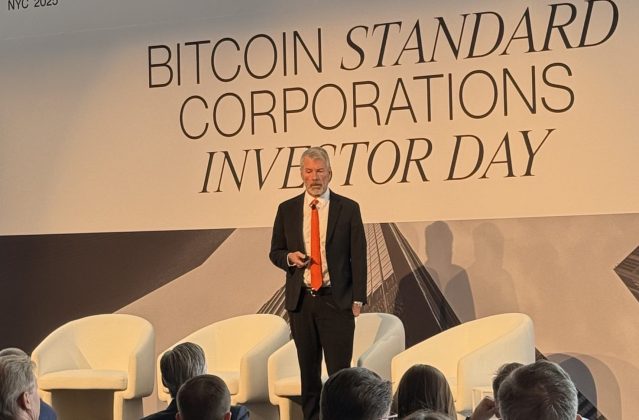
Bitcoin wallet provider GreenAddress was always critical of raising Bitcoin's block-size limit. As one of the first in the space in May of this year, the European multisig-wallet and software company
publicly
opposed
Bitcoin XT and Bitcoin Core developer Gavin Andresen's initial plans to increase the maximum block size.
Now, more than six months later, GreenAddress CEO Lawrence Nahum still holds firm, telling Bitcoin Magazine, “We are approaching this issue with an open yet conservative mind, and with the idea that first and foremost Bitcoin should be censorship resistant, and thus decentralized to achieve that. In the future it may be possible and healthy to increase the block size without compromising Bitcoin’s decentralization, but we're not convinced solutions such as BIP [Bitcoin Improvement Proposal] 101
fit the bill.”
The long-lasting block-size dispute, representing a trade-off between the number of transactions
the Bitcoin network can handle and its
decentralization, might be entering a decive month. A large segment of Bitcoin's academic and engineering community will discuss this and other issues at the upcoming
Scaling Bitcoin
workshop in Hong Kong on the 6th and 7th of December,
while
several
prominent
Bitcoin companies have stated they intend to change their code to allow for bigger blocks this month.
Nahum strongly maintains that scaling Bitcoin shouldn't happen at the cost of further centralization.
As the size of the blocks increase so does mining and node centralization,” Nahum argued. “It is already quite evident in the industry that even Bitcoin companies have been reluctant in running Bitcoin nodes, and as the resource requirements are ever increasing less and less people run nodes. If we were to further accelerate the rate of resource requirements we would soon end up in a situation where people can’t validate transactions and have to rely on a few big companies providing sync services over big data centers – that’s not very censorship resistant.”
Nahum did, however, acknowledge that Bitcoin should scale to allow for more than a handful of transactions per second on Bitcoin's blockchain – as long as it doesn't hurt Bitcoin's current properties.
“Scaling Bitcoin is important, and it is urgent in the sense that the earlier Bitcoin can scale the better it is, and the sooner new use cases can be adopted, such as micro-payments, instant transactions, better privacy, and more,” Nahum explained, emphasizing, “'Scale' being the keyword here.
Increasing the block size is not scaling; it's pivoting Bitcoin from a decentralized currency into a centralized one that can handle more transactions,” he said. “We know how that looks – see PayPal, Visa, etc. – and we wouldn’t have adopted Bitcoin if it’s primary function wasn’t censorship resistance.”
Andresen's latest proposed solution,
BIP 101,
was implemented into Bitcoin XT last summer, and is programmed to increase the maximum block size to 8 megabytes if a threshold of 75 percent of mining power accepts the change. Once activated, this limit is set to double every two years for 20 years, ultimately leading to an 8-gigabyte block-size limit. This solution was since endorsed by major industry players, such as
Coinbase
,
Slush Pool
and
others
.
Nahum, however, maintains that BIP 101 is a bad idea, and disregarded the idea of GreenAddress willfully adopting the proposal.
We think BIP 101 is ill-advised, because it tries to predict the future on wishful thinking in terms of resources, while the simulations provided were insufficient. And perhaps even more important: It doesn’t use consensus to activate, but a mere 75 percent majority. This means it can be activated out of sheer luck, and cause problems with hard fork and consecutive blockchain reorganizations,” Nahum said.
Nahum further explained that GreenAddress might support block increase solutions that are more conservative than BIP 101 – as long as they're not rushed through under pressure just to get things done. The CEO does not think haste is needed, as he believes full blocks are inevitable, and even needed for a healthy fee market to establish on the Bitcoin network.
And, importantly, Nahum believes that Bitcoin's real scaling solutions should ultimately be built on top of the protocol, as additional layers.
We think Lightning is very promising,” Nahum said. “At a high level it allows to transfer bitcoin using Bitcoin transactions, but skipping the blockchain until it is actually necessary, effectively compressing or netting the transactions. This provides instant transactions, micro-payments, and scale! We could do thousands of transactions per second without requiring every Bitcoin node to validate and store all these transactions – which may even improve privacy, too.”
Photo sacks08
/ Flickr(CC)










